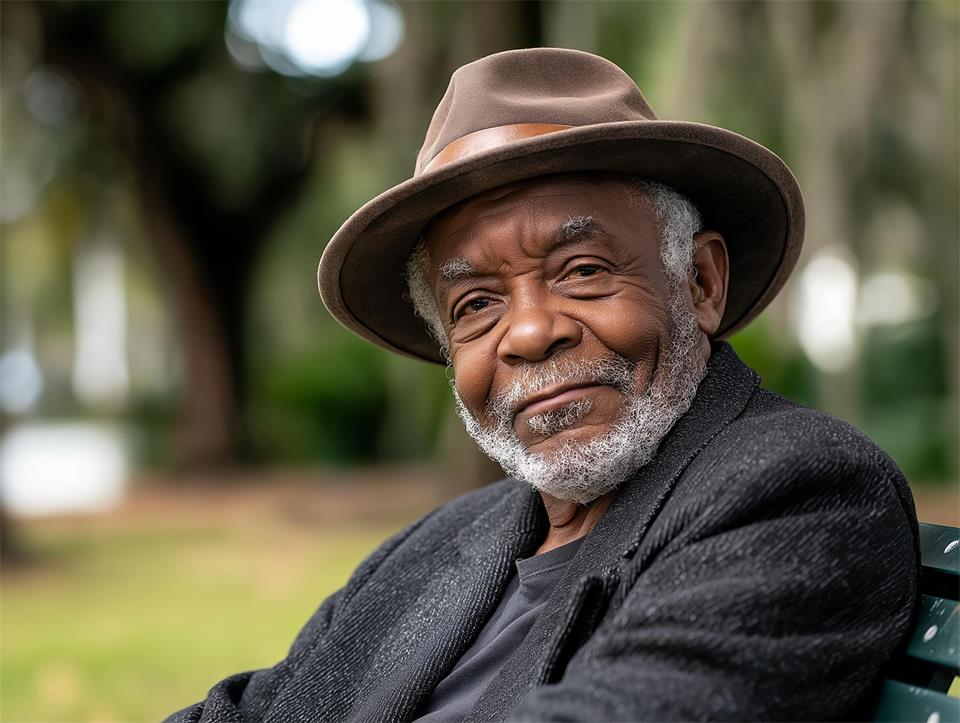Lifesytle
Legacy Living: How the Elderly Can Inspire Generational Change


As society continues to evolve, one constant remains: the wisdom of our elders. Often underestimated or overlooked, older generations hold the key to values, stories, and life lessons that can shape the future.
The idea of legacy living is more than just passing down wealth or heirlooms, it’s about inspiring positive change across generations through lived experience, resilience, and insight.
Redefining Legacy in Modern Times
Legacy is no longer defined only by the material things we leave behind. Today, it includes emotional, ethical, and cultural contributions. The elderly, through their unique life experiences, have the power to influence younger generations in ways that go far beyond tradition.
Whether it’s through storytelling, mentorship, or quiet acts of courage and kindness, the impact can last far longer than physical possessions.
In an age dominated by fast-paced technology and short attention spans, the elderly offer something rare: perspective.
They’ve witnessed social changes, survived economic downturns, seen families and communities grow and evolve, and learned the importance of patience and perseverance. These insights can guide younger generations to lead more balanced, thoughtful lives.
The Power of Storytelling
One of the most compelling ways the elderly can influence generational change is through storytelling. Personal narratives carry emotional depth that facts and figures cannot. A grandfather recounting his experiences during wartime, or a grandmother describing how she raised a family during difficult times, offers lessons in strength, sacrifice, and hope.
These stories become powerful tools that teach empathy and gratitude. For younger people, especially those growing up in more comfortable or digital environments, hearing about the challenges of past generations can cultivate a sense of humility and respect.
It helps them understand the broader human experience and gives context to their own struggles and triumphs.
Mentorship and Role Modeling
Older adults can also serve as mentors—whether formally, through volunteer programs or educational settings, or informally within families and communities. Their role as advisors helps bridge the generational gap, offering practical wisdom while also validating the importance of younger voices.
Many seniors thrive in mentorship roles, finding a renewed sense of purpose in helping others navigate life’s challenges. From career advice to coping with loss, older mentors can offer guidance rooted in personal experience rather than theory. This type of intergenerational connection fosters mutual respect and understanding, building stronger communities in the process.
For example, care communities like this Bury St Edmunds care home often encourage intergenerational activities, bringing together residents and local students or youth groups. These encounters lead to meaningful conversations and shared learning moments, showing that the elderly aren’t just recipients of care but also providers of wisdom and inspiration.


Values That Transcend Time
Another key component of legacy living is the transmission of values. Integrity, kindness, perseverance, and responsibility—these qualities are often embodied by older adults who’ve weathered life’s storms. By living these values and modeling them for others, they leave a legacy that influences how future generations behave and interact with the world.
In a world that sometimes seems driven by instant gratification, such enduring values are a grounding force. When younger individuals see their elders demonstrating patience, humility, or generosity, those traits are more likely to be carried forward.
Practical Ways to Share Legacy
Legacy doesn’t have to be abstract. There are practical ways that the elderly can inspire generational change:
- Writing memoirs or letters: Even simple reflections or advice written down can become treasured keepsakes.
- Volunteering: Sharing time and expertise in schools, libraries, or community centers creates direct, positive impact.
- Hosting family traditions: Holidays, recipes, and rituals provide continuity and connection.
- Recording oral histories: Many organizations help document personal stories that enrich community history and family identity.
Even a simple afternoon spent talking to grandchildren about past struggles or joys can leave a lasting impression. The act of sharing encourages curiosity and dialogue, both of which are essential for growth across generations.
Changing How Society Views Aging
To fully realize the potential of legacy living, society must shift its view of aging. Older adults should not be seen solely as dependent or fragile. Rather, they’re reservoirs of experience, mentors-in-waiting, and cultural touchstones.
Supporting environments where the elderly can thrive—emotionally, mentally, and socially—is essential. That means providing access to stimulating activities, opportunities for connection, and platforms to share their stories.
Beyond social and emotional well-being, financial stability also plays a crucial role in enabling seniors to lead fulfilling lives. Access to practical resources can significantly enhance their ability to participate in activities and maintain independence. For Canadian seniors, understanding how to maximize their purchasing power is key. Many resources exist to help them discover valuable discounts for seniors over 55 Canada, covering everything from daily necessities to travel and entertainment. Leveraging these savings allows them to enjoy a higher quality of life and continue contributing to their communities without undue financial stress. When older individuals feel valued, they’re more likely to engage and contribute in meaningful ways.
A Lasting Influence
Legacy isn’t about achieving fame or recognition; it’s about planting seeds for a better future. The elderly, through their actions, choices, and interactions, shape how future generations think, feel, and act. Their influence is subtle but powerful—a quiet force for compassion, strength, and progress.
Encouraging intergenerational connections, listening to older voices, and celebrating their contributions will ensure that their legacies live on, not just in memory, but in the hearts and minds of those who follow.
In a world that’s constantly looking forward, sometimes the most important direction is to look back—and learn.
Fashion
Wearing Your Mood: How Graphic Tees Say What You’re Thinking


Ever seen someone walk past with a T-shirt that made you smile or made you think, “That’s so true”? That’s the thing about graphic tees—they can say a lot without the person wearing them even speaking. Some are funny, some are weird, some are just super honest. But they all do the same thing: they let you show people a bit of who you are.
Not everyone wants to make a big deal about what they’re feeling. A shirt with a joke or a quote can be an easy way to show your mood, your thoughts, or something you like. That’s why so many people wear them, because it’s simple and feels natural.
What Counts as a Graphic Tee?
A graphic tee is any T-shirt that has something printed on it. That could be a picture, a short sentence, a logo, a band name, or even something random that doesn’t seem to make sense. There’s no real rule for what the graphic has to be. That’s kind of the fun part, almost anything goes.
Sometimes the design covers the whole shirt. Other times, it’s just a tiny thing in the corner. Some are in-your-face and bold. Others are kind of quiet and only make sense if you look closely. That variety is what makes them feel personal.
You can spot graphic tees just about anywhere—online, at markets, or in stores—and the designs are never all the same. Some are funny, some are totally random, and some hit way too close to home. That’s what makes them feel so different from regular shirts.
One design might show off a favorite character, while another simply says “Not Today” in big letters—and both work, depending on the mood.
A Shirt That Matches Your Mood
Most people don’t feel the same every day. Some days are stressful, some are fun, and some are just boring. That’s where graphic tees really work. They let your clothes match how you feel, without needing to explain anything.
If you’re feeling silly, a shirt with a weird drawing or a goofy saying does the job. Feeling tired of everything? There’s always a tee that says something like “No thanks” or “Not today.” And if you’re feeling good, something with a cool design or bold words can help show that confidence.
It’s a quiet way to be honest. Even if no one says anything about your shirt, they still get a little clue about your mood. That’s why so many people love wearing printed T-shirts—they’re easy to throw on and say just enough without trying too hard.
Jokes, Memes, and Fandoms
One of the biggest reasons people wear graphic tees is to show what they’re into. If you love a certain movie, game, or show, there’s probably a shirt that has something from it. And when someone else recognizes it, that’s a little connection right there.
Some tees have quotes or images from things that only a few people will get. These become inside jokes. And when another person gets the reference, it’s like finding someone who’s part of your group, even if you’ve never met before.
There are also designs that don’t really connect to anything, just random ideas that look cool or say something weird. But that’s the point. Not everything has to have a deep reason. Sometimes, people wear stuff just because it feels fun or different. And that’s totally fine.
Expressing Something Without Saying a Word
Not everyone wants to talk about what they care about. It can be awkward, especially when it’s something personal. But a T-shirt with a message or an image? That’s low-pressure. It speaks for you, quietly.
Some people wear tees with kind messages, like “be yourself” or “you matter.” Others wear ones that are a little sarcastic or serious. It depends on what they’re feeling or what they believe in. These designs can say a lot, without turning it into a big conversation.
Even when it’s just a joke, a graphic tee can leave an impression. It sticks in people’s minds in a different way than normal clothing does.
Why People Keep Wearing Them
Graphic tees don’t need rules. You don’t have to be into fashion or care about trends to wear one. You don’t need to match them with anything fancy. They just work. With jeans, shorts, joggers, whatever. It all fits.
They’re also one of those rare things where people of any age wear them—kids, teens, adults. Everyone finds ones that feel right for them. Some keep their old ones for years because they mean something or remind them of a time in their life. Others keep collecting new ones because they like switching it up.
The best part? They don’t try too hard. You can be chill, bold, funny, serious, or even kind of awkward—and there’s probably a tee out there that fits that exact vibe.
Everyday Fashion That Actually Feels Personal
It’s easy to forget that clothes aren’t just about looking a certain way. They’re also about showing who you are. Graphic tees make that simple. No big outfit planning, no guessing what looks “cool.” Just throw on something that feels like you, and you’re good.
Whether it’s a print of your favorite cartoon, a phrase that sums up your attitude, or just a picture that makes no sense but somehow works—it all counts. It’s not about getting noticed. It’s about being comfortable in what you’re wearing.
And the coolest part? Sometimes someone sees your shirt, smiles, and just gets it. No small talk needed.
What It All Comes Down To
Graphic tees are more than just casual wear. They’re a way to say something, even if it’s only a joke or a favorite quote. They give people a way to show how they feel, what they love, or what kind of person they are—without needing to explain themselves.
It doesn’t matter if the shirt is loud or quiet, colorful or plain. What matters is that it says something that feels true to the person wearing it. That’s why graphic tees aren’t just a trend—they’re something that sticks around. Because expressing yourself shouldn’t be complicated.
And if a simple shirt can do that, then that’s pretty cool.
Gifts
Corporate Gifts That Impress: A Guide to Thoughtful Client Appreciation


In an increasingly digital and transactional world, expressing appreciation can take on a new meaning and peak more than it ever has. Branded corporate gifts have the power to strengthen relationships with clients and to create long-lasting connections. Customers remember their experiences based on how they feel.
If you do this right, gifts can express appreciation, speak to brand values, and promote recall of your business brand. Gifts and rewards are more than merely markers of appreciation; they are a touchpoint and part of the client journey, helping to make customers feel appreciated, valued, and connected with the business on a deeper level.
The right gift isn’t simply about being expensive or extraordinary, but the right gift is about being relevant, thoughtful, and, more importantly, timely.
How to Choose Client Gifts That Leave a Lasting Impression


- Personalization Matters More Than Price
Corporate gifts that are specially personalized show dedication of time and care put into choosing them. High-end items may indeed catch your attention at first, but oftentimes, it is the personal aspects of the gift—like a custom monogram, personalized packaging, or a handwritten card—that will stick with the client.
When you personalize it, it feels more valuable as it communicates that you care about the relationship on a purely transactional basis. Within many industries today, personalized gifting is becoming commonplace, and if a business doesn’t personalize the gift, it can be construed as being cold or uncaring.
- Align the Gift with Your Brand’s Values
Gift-giving is a natural progression of the brand story. For instance, if environmental sustainability is your brand identity, you should consider giving gifts that reflect that. If your brand is about design and innovation, you should give gifts that reflect the same level of sophistication.
Every interaction you have with a client (including gifts) is another opportunity to reinforce the brand’s identity in their mind, and most importantly, pairing it with gift templates that talk about your brand’s mission can be even better.
- Be Culturally and Professionally Appropriate
While thinking of corporate gifting, context becomes an important thing to consider. A thoughtful gift for one industry or area may not translate into the same meaningfulness in other industries. Knowing your cultural norms, your client preferences, and your industry standards is all important to avoid burning bridges! Some cultures, for example, may not find extravagant gifts as professional and thoughtful.
On the other side of the story, if someone in the finance or law industries, for example, receives an overly casual or funny gift, that may also not land well with them. A little research can go a long way when determining how your gift will be seen or received by a human.
Choosing gifts related to their industry or profession can be both meaningful and useful for them. Further, appropriately branding them can go a long way in reinforcing your brand identity.
- Utility Adds Value
Gifts that are both functional and aesthetically pleasing will have a higher chance of being cherished and remembered. Ask yourself what your client will use regularly; perhaps a notebook with well-designed, sleek pages, a useful desk accessory, or perhaps one of those high-end gourmet food items. Anything like that’ll work!
Well-designed gifts, provided they are usable and of quality, of course, will serve as living reminders of your company. They will remind your client that you are there and will make them reach out to you from time to time for business work and future collaborations. They can reuse the gift, too, which is in keeping with the sustainability mindset and increases their perceived value of the gift.
- Timing Can Amplify the Impact
Though holidays can be a common time for corporate gifting, an unexpected gift often has a greater impact. Think of recognizing a client’s milestone, a project launch, or even a long-standing partnership anniversary. Their significance makes these moments meaningful for clients.
If you can determine the strategic timing of when to gift, it demonstrates that you are attentive and make the gesture personal in ways that honor their commitment to the relationship and its importance. Randomly gifting during the holidays may give your gift the chance of getting lost in the holiday frenzy, whereas an unexpected gift will be much more enduring and unique to their experience.
End Point
Corporate gifting is not simply a daily chore that you have to take care of; it’s a means of showing your clients that you appreciate them and that you understand their business.
If you have chosen a gift carefully, it can become more than just a transaction; it can develop into a special relationship, especially when it is done at the correct moment, and it is a representation of your brand. The value of that could be invaluable when there is a highly competitive landscape.
Beauty
Tips for Looking After Your Skin When You Have a Big Trip Lined Up


Getting ready for a big trip is always exciting, whether it’s a beach vacation, a city getaway, or an adventure abroad. Amid all the planning and packing, don’t forget about one important point: your skin. Travel, especially long flights or exposure to different environments, can take a toll on your complexion.
Fortunately, with a little foresight and attention to your skincare routine, you can ensure that your skin stays healthy, hydrated, and radiant throughout your journey. Here are some helpful tips to keep your skin looking its best.
Hydrate
One of the most common skin issues people face when traveling is dehydration. Whether you’re flying in an airplane, spending time outdoors in a hot climate, or dealing with changes in humidity, dehydration can cause your skin to appear dull, dry, and prone to irritation.
To combat this, drink plenty of water leading up to your trip and during your travels. It’s important to stay hydrated on a daily basis, especially in the days before your trip, to help keep your skin plump and glowing.
If you’re flying, consider using a hydrating facial mist during your flight to maintain moisture levels. Additionally, avoid alcohol and caffeinated drinks, as they can dehydrate your body and skin.
Protect Your Skin from the Sun
Whether you’re traveling to a tropical destination or exploring a new city, sun protection is crucial. Long exposure to UV rays can lead to premature aging, sunburn, and damage to your skin’s texture. Before heading out, always apply a broad-spectrum sunscreen with SPF 30 or higher.
If you’re going to be outdoors for extended periods, reapply sunscreen every two hours, especially if you’re swimming or sweating. Don’t forget to protect often-missed areas such as the ears, back of the neck, and the underside of your hands.
Stick to a Simple Skincare Routine
When traveling, it’s easy to neglect your usual skincare routine due to time constraints, unfamiliar environments, or a change in your surroundings. However, consistency is key to maintaining healthy skin, even when on the go.
You don’t need to bring your entire skincare collection with you, but it’s essential to keep your routine simple and effective. Focus on the basics: cleanse, hydrate, and protect. A gentle, hydrating cleanser, a lightweight moisturizer, and your sunscreen are non-negotiable.
Preemptively Treat Skin Concerns
If you’re prone to acne, sensitivity, or any other skin issues, make sure to address them before your trip. Traveling, particularly flying, can sometimes trigger breakouts or exacerbate skin sensitivities.
To prevent this, consider booking a facial or skin treatment prior to your departure. Professional treatments, such as a hydrafacial or microdermabrasion, can give your skin a healthy boost and help you start your trip with a clear and glowing complexion.
One place that can help you prepare your skin for travel is dermani MEDSPA. They offer a variety of skincare treatments designed to rejuvenate and refresh your skin, leaving you looking your best before you jet off. Their professional staff can provide expert advice on how to get your skin in optimal condition for the rigors of travel.
Bring Travel-Friendly Skincare
Airport regulations often restrict the amount of liquid you can bring in your carry-on, but that doesn’t mean you have to sacrifice your skincare routine.
Invest in travel-sized versions of your favorite skincare products or purchase reusable travel containers to fill with your essentials. Look for multi-purpose products that can save space, such as a moisturizer with built-in SPF or a cleanser that doubles as a makeup remover.
For the dry airplane cabin, packing a rich, nourishing lip balm and a hand cream can help keep those often-neglected areas hydrated. Additionally, you might want to bring a soothing face mist to refresh your skin during your flight.
Be Mindful of the Local Climate
Every destination has its unique climate, and it’s important to adjust your skincare routine accordingly. If you’re traveling to a dry or hot climate, you may need a heavier moisturizer or an oil-based serum to lock in hydration. On the other hand, if you’re heading to a more humid destination, opt for lightweight, oil-free products to avoid clogged pores.
In areas where the air is dry or cold, like high altitudes or snowy destinations, add an extra layer of moisture to your routine to prevent your skin from becoming parched. Consider using a rich overnight mask or a nourishing oil to keep your skin feeling soft and smooth.
Avoid Stressing About Skin Imperfections
Finally, remember that travel can be stressful, and it’s normal to experience the occasional breakout, redness, or irritation. Don’t stress about your skin, as it’s important to enjoy your trip and not let minor skin issues overshadow the experience.
If you feel your skin is acting up, stick to your basic routine, drink lots of water, and try to get enough sleep. Often, stress and lack of rest can trigger skin flare-ups, so be kind to yourself and give your body the rest it needs.
-



 Quotes5 years ago
Quotes5 years ago125 Inspirational Car Quotes and Captions to Celebrate Your New Car
-



 Growth5 years ago
Growth5 years ago188 Deep Hurt Quotes with Images
-



 Quotes4 years ago
Quotes4 years ago148 Romantic Love Quotes for Her from the Heart
-



 Quotes4 years ago
Quotes4 years ago164 Relationship Goals Quotes for New Couples Expecting a Long Lasting Relationship
-



 Quotes4 years ago
Quotes4 years ago185 Cute Boyfriend Quotes for the Guy You Love
-



 Quotes4 years ago
Quotes4 years ago141 Best Heart Touching Quotes about Love, Life, and Friendship
-



 Quotes4 years ago
Quotes4 years ago134 Time Flies Quotes for the Unforgettable Moments
-



 Quotes4 years ago
Quotes4 years ago122 Inspirational Kite Quotes That’ll Make You Wanna Fly Right Now






